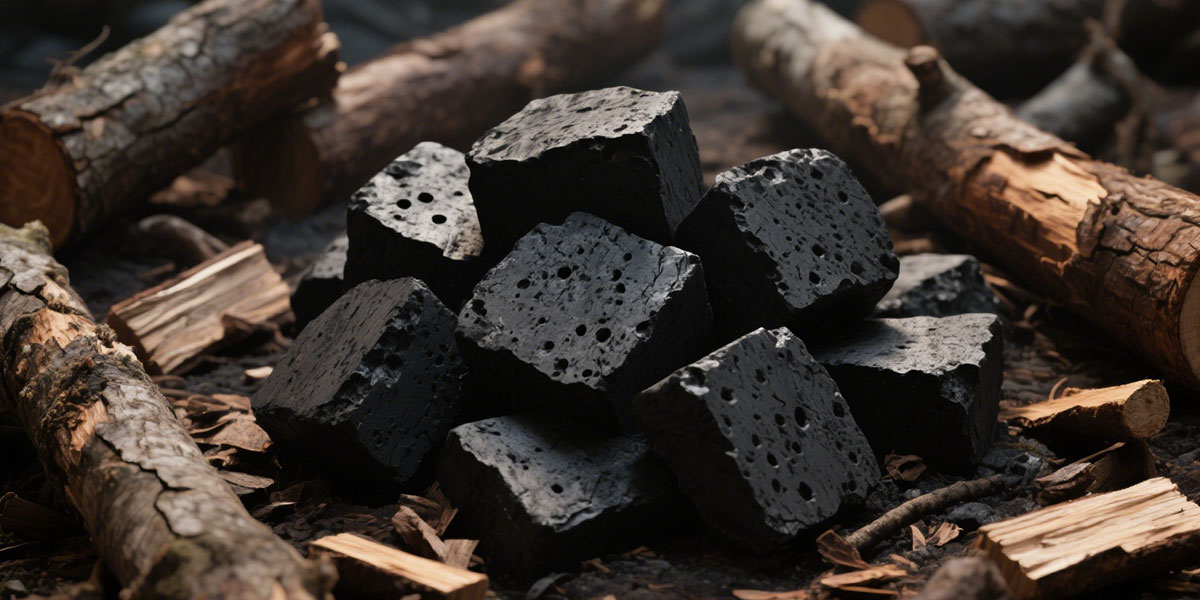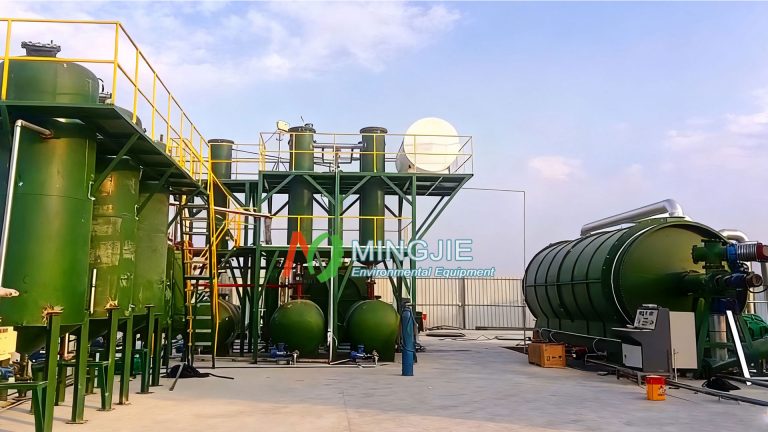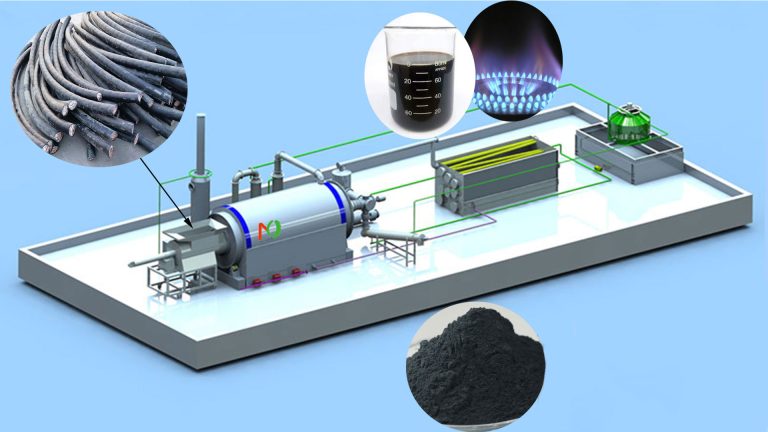Wood pyrolysis plant not only fully utilizes wood resources and produces high-value products, but also provides new ideas and solutions for sustainable development. The wood pyrolysis process produces a rich and diverse array of products. These wood pyrolysis products can be categorized by their physical state: gaseous, liquid, and solid. The main products of wood pyrolysis are syngas, tar, and biochar.
During wood pyrolysis process, the complex organic matter within wood undergoes a series of complex physical and chemical changes under the influence of heat.
Wood pyrolysis is a multi-stage process. The initial stage primarily involves dehydration and the release of some volatile substances. As the temperature rises, the cellulose in the wood begins to decompose, producing small molecules such as carbon dioxide and water vapor. Simultaneously, the lignin and hemicellulose also undergo varying degrees of thermal cracking, producing a variety of volatile compounds.
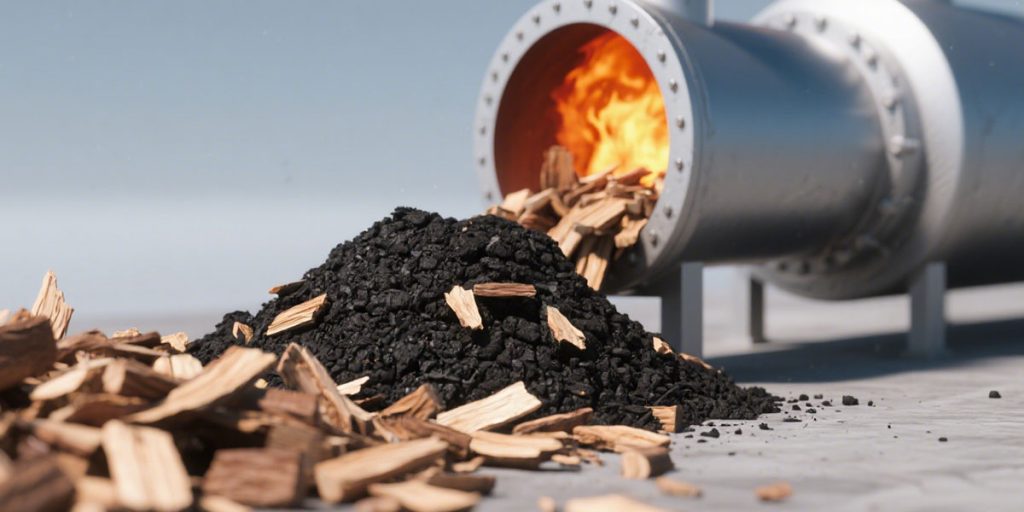
The second stage involves deeper chemical changes, including the breaking of the carbon skeleton and the formation of new substances. During this stage, the carbon content in the wood increases significantly, while a large amount of heat energy is released.
In addition, several byproducts with potential applications are produced, such as tar and biochar. These wood pyrolysis products, each with their own unique properties, show great potential for application in various fields, including energy, chemicals, and environmental protection.
Application of Wood Pyrolysis Products
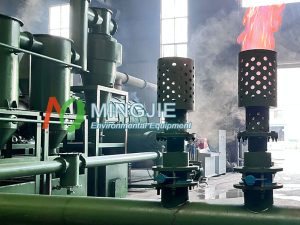
Gas Products – Syngas
Wood pyrolysis produces syngas. Carbon monoxide, hydrogen, and methane are the most common components.
Carbon monoxide, a colorless and odorless but toxic gas, exhibits strong reducing properties at high temperatures. Furthermore, when mixed with gases such as hydrogen, nitrogen, methane, and carbon dioxide, it can be used as fuel gas (syngas), an effective alternative to natural gas.
Hydrogen, a clean energy source, produces only water as a combustion product, leaving no environmental impact. In the energy sector, hydrogen is considered a key future energy development direction. It can be used in fuel cell vehicles to power vehicles and achieve zero-emission mobility. Furthermore, in chemical production, hydrogen is a key raw material for the synthesis of important chemical products such as ammonia and methanol.
Methane, a primary component of natural gas, is widely used in household cooking, heating, and power generation. It can also be compressed to form compressed natural gas (CNG), a clean fuel for vehicles.
These syngas of wood pyrolysis products, whether used alone or in combination, play an important role in energy supply and chemical production.
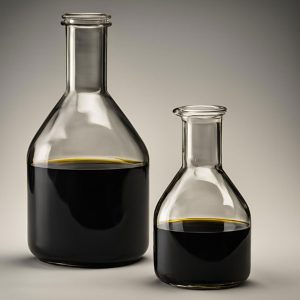
Liquid Products – Wood Tar and Vinegar
Wood tar and wood vinegar are important components of the liquid wood pyrolysis products.
Wood tar is a complex, thick liquid rich in various organic compounds, such as phenols, acids, and esters. In the chemical industry, wood tar is used to make preservatives. Its special chemical components effectively inhibit microbial growth. It can also be used as a softener in rubber processing, improving rubber’s flexibility and plasticity.
Wood vinegar, an acidic liquid primarily composed of acetic acid, has a wide range of applications in agriculture. It can be used as a soil conditioner to regulate soil pH, improve soil structure, and promote the growth of beneficial microorganisms. As a plant growth regulator, wood vinegar can stimulate plant growth and enhance crop resistance to stress. Furthermore, wood vinegar has a certain deodorizing effect, removing odors and improving ambient air quality.
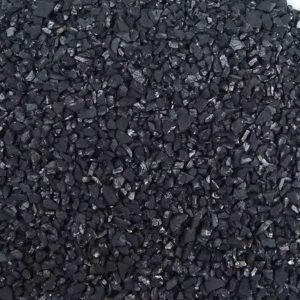
Solid Products – Biochar
Charcoal is the primary solid product formed by wood charcoal making machine. It is a black solid rich in carbon.
Charcoal is an indispensable reducing agent in the metallurgical industry. In daily life, charcoal is a high-quality fuel for barbecues and heating. Furthermore, charcoal has excellent adsorption properties and can be used for water and air purification. In agriculture, charcoal can be used as a soil conditioner, increasing soil aeration and water retention. In the artistic field, charcoal is also a common painting tool.
Wood Pyrolysis Plant for Charcoal Making
The wood pyrolysis process is subject to precise control of numerous factors, such as temperature, heating rate, and reaction time. These factors determine the distribution and quality of the pyrolysis products, playing a key role in the efficiency of the pyrolysis process and the properties of the products.
To achieve efficient charcoal making, numerous advanced pyrolysis equipments have emerged.
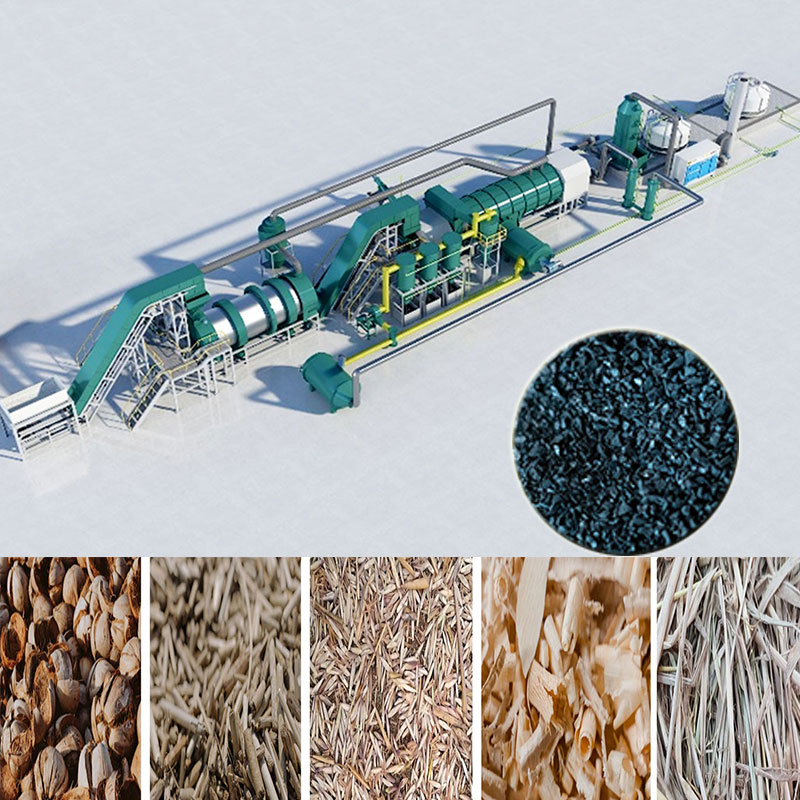
Mingjie biomass pyrolysis plant utilizes a high-quality carbonization furnace. Its rotating furnace continuously tumbles the wood within, ensuring uniform heating and improving pyrolysis efficiency. The pyrolysis reaction takes place under vacuum, effectively preventing oxidation and side reactions, and enhancing the purity of the wood pyrolysis products – biochar.
Mingjie continuous pyrolysis plant can process a variety of materials, including wood chips, rice husks, peanut shells, plant straw, and bark. The pyrolysis carbonization equipment utilizes high-efficiency insulation materials and energy recovery technology to reduce energy consumption and operating costs.
The biomass carbonization process is carried out in an oxygen-deficient environment, and the resulting flue gas is purified before discharge.

